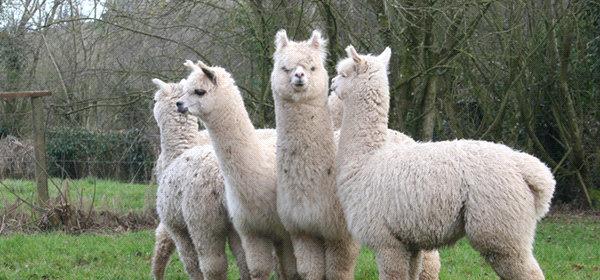Pulpy Kidney ( Enterotoxaemia ) a deadly disease in alpacas, sheep, cattle and goats By Ourimbah Vet Hospital
We see a number of deaths from enterotoxaemia when we have longer than usual warm weather, together with plenty of rainfall that creates ideal condi�ons for this disease to occur.
occurring by not making any sudden changes to the type of pasture or hay your animals are ge�ng.
What is Enterotoxaemia?
The good news is that most cases of enterotoxaemia can be prevented by vaccina�on. 5 in 1 and 7 in 1 vaccines protect against Clostridium perfringens Type D, which is the most common strain. There is also now an 8 in 1 vaccine, which covers some extra strains of the bacteria*. We have seen some cases where people lost animals that had been vaccinated with 5 in 1, but the losses ceased when they started using 8 in 1. Incidentally, these vaccines also protect against other clostridial diseases, including tetanus and and blackleg. In our area (central coast NSW) these other diseases tend to occur less o�en, but they are just as deadly!
Enterotoxaemia (commonly called “Pulpy Kidney”) is caused by the overgrowth of a par�cular species of bacteria (Clostridium perfringens) in the intes�nal tract of many species of animals, including alpacas, sheep, ca�le and goats. This bacterium produces a very potent toxin which causes severe systemic disease, leading to rapid collapse and death. There are usually no warning signs and there is no effec�ve treatment. Typically, animals appear perfectly healthy one day and then are found dead the next. In some cases the course of the disease can be a bit slower – up to a day or so – but the end result is always the same. Deaths from enterotoxaemia occur mainly in the spring and summer months when pastures are green and growing rapidly. Alterna�vely, they can occur a�er a change of feed, especially if there is an increase in the amount of fresh green grass or hay being fed or if animals are moved onto fresh pasture. These kinds of feed seem to set up condi�ons in the animal’s gut which favour the growth of Clostridium perfringens. You can reduce the chances of enterotoxaemia
Preven�on
Vaccina�on is the key!! It is important to vaccinate animals before they are exposed to the disease and to make sure they have regular boosters. The ini�al course is 2 doses given 4 to 6 weeks apart. This is usually started at about 6 weeks of age. Sheep and ca�le should have boosters every year, but for alpacas and goats it is recommended to give them boosters every 6 months. 5 in 1 vaccine is quite cheap and does not have to be given by a vet. It is also quite safe to vaccinate at the same �me as doing other procedures such as worming, so you can make it part of your rou�ne management. Please feel free to get in touch with us if you would like any more informa�on about enterotoxaemia, or if you would like any help in se�ng up a vaccina�on program. * Editors note - please check with your veterinarian regards 7 in 1 or 8 in 1 suitability for alpacas.
20













